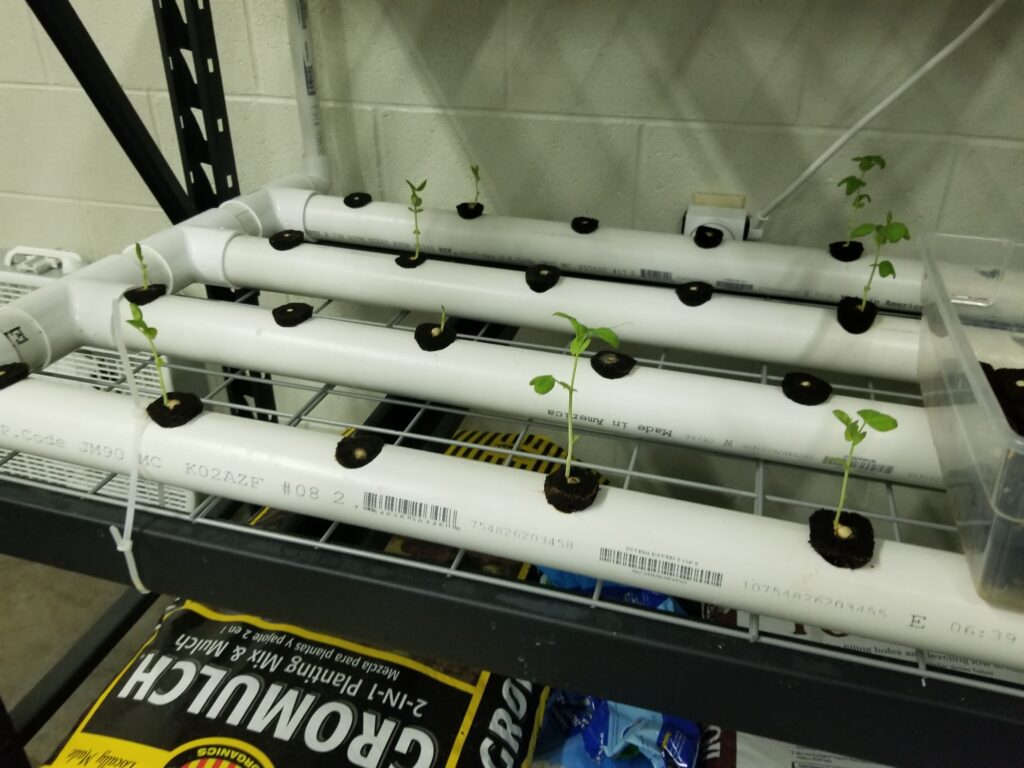As crypto mining rigs hummed away generating hashes, they also churned out something else in abundance: heat. And while many saw that waste heat as a byproduct to manage, we saw it as an opportunity.

That year, we launched a small-scale pilot project to explore a wild idea: Could we grow fresh produce using the waste heat from cryptocurrency mining — even in freezing climates?
Our pilot took place in a modest indoor lab space where temperatures outside routinely dipped below freezing. Inside, however, we had something no greenhouse could match: racks of crypto miners pushing out consistent, high-temperature airflow — a perfect source of passive heating.
We combined this heat source with a basic nutrient film technique (NFT) hydroponic setup — a DIY system using PVC pipes, rockwool plugs, and flowing nutrient water to grow leafy greens.
Early-stage hydroponic growth powered by crypto waste heat, 2018.
Like any pilot, we hit our fair share of bumps:
Early on, we realized that water quality would be just as critical as heat or nutrients. Since hydroponics relies entirely on water as the growing medium, any imbalance could mean stunted growth or plant death.
We started with tap water, but quickly noticed inconsistent pH and mineral content. Even trace amounts of chlorine or heavy metals could throw off the delicate balance in our system. To stabilize conditions, we began:
The result was a much more consistent growth environment, and another lesson learned: in hydroponics, the water is your soil — and needs just as much care.
We started with hardy plants: leaf lettuce, spinach, bell peppers and a few tomatoes. Germination was fast, and growth was promising — especially in a climate where soil growing would have required significant energy input.
Key lessons:
While the crypto market cooled in more ways than one, our experiment lit a spark. It showed us that waste heat doesn’t have to be wasted — and that data, finance, and farming can intersect in creative, regenerative ways.
Today, many data centers and blockchains are exploring sustainable energy strategies. But back in 2018, this was just a crazy idea born from curiosity and a little leftover heat.
We’re proud of that plastic-and-pipe pilot. It wasn’t perfect — but it planted seeds, both literal and metaphorical.